Convergent evolution in structural elements of proteins investigated using cross profile analysis
- PMID: 22244085
- PMCID: PMC3398312
- DOI: 10.1186/1471-2105-13-11
Convergent evolution in structural elements of proteins investigated using cross profile analysis
Abstract
Background: Evolutionary relations of similar segments shared by different protein folds remain controversial, even though many examples of such segments have been found. To date, several methods such as those based on the results of structure comparisons, sequence-based classifications, and sequence-based profile-profile comparisons have been applied to identify such protein segments that possess local similarities in both sequence and structure across protein folds. However, to capture more precise sequence-structure relations, no method reported to date combines structure-based profiles, and sequence-based profiles based on evolutionary information. The former are generally regarded as representing the amino acid preferences at each position of a specific conformation of protein segment. They might reflect the nature of ancient short peptide ancestors, using the results of structural classifications of protein segments.
Results: This report describes the development and use of "Cross Profile Analysis" to compare sequence-based profiles and structure-based profiles based on amino acid occurrences at each position within a protein segment cluster. Using systematic cross profile analysis, we found structural clusters of 9-residue and 15-residue segments showing remarkably strong correlation with particular sequence profiles. These correlations reflect structural similarities among constituent segments of both sequence-based and structure-based profiles. We also report previously undetectable sequence-structure patterns that transcend protein family and fold boundaries, and present results of the conformational analysis of the deduced peptide of a segment cluster. These results suggest the existence of ancient short-peptide ancestors.
Conclusions: Cross profile analysis reveals the polyphyletic and convergent evolution of β-hairpin-like structures, which were verified both experimentally and computationally. The results presented here give us new insights into the evolution of short protein segments.
Figures

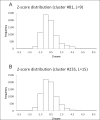

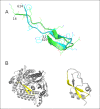
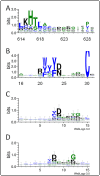

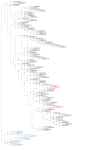

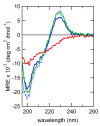
Similar articles
-
A galaxy of folds.Protein Sci. 2010 Jan;19(1):124-30. doi: 10.1002/pro.297. Protein Sci. 2010. PMID: 19937658 Free PMC article.
-
On the evolution of protein folds: are similar motifs in different protein folds the result of convergence, insertion, or relics of an ancient peptide world?J Struct Biol. 2001 May-Jun;134(2-3):191-203. doi: 10.1006/jsbi.2001.4393. J Struct Biol. 2001. PMID: 11551179 Review.
-
Protein-segment universe exhibiting transitions at intermediate segment length in conformational subspaces.BMC Struct Biol. 2008 Aug 13;8:37. doi: 10.1186/1472-6807-8-37. BMC Struct Biol. 2008. PMID: 18700043 Free PMC article.
-
Sequence analysis on the information of folding initiation segments in ferredoxin-like fold proteins.BMC Struct Biol. 2014 May 23;14:15. doi: 10.1186/1472-6807-14-15. BMC Struct Biol. 2014. PMID: 24884463 Free PMC article.
-
Contemporary approaches to protein structure classification.Bioessays. 1998 Nov;20(11):884-91. doi: 10.1002/(SICI)1521-1878(199811)20:11<884::AID-BIES3>3.0.CO;2-H. Bioessays. 1998. PMID: 9872054 Review.
Cited by
-
Phylogenomic study indicates widespread lateral gene transfer in Entamoeba and suggests a past intimate relationship with parabasalids.Genome Biol Evol. 2014 Sep;6(9):2350-60. doi: 10.1093/gbe/evu179. Genome Biol Evol. 2014. PMID: 25146649 Free PMC article.
-
Structural screens identify candidate human homologs of insect chemoreceptors and cryptic Drosophila gustatory receptor-like proteins.Elife. 2023 Feb 20;12:e85537. doi: 10.7554/eLife.85537. Elife. 2023. PMID: 36803935 Free PMC article.
-
The Convergence of the Hedgehog/Intein Fold in Different Protein Splicing Mechanisms.Int J Mol Sci. 2020 Nov 7;21(21):8367. doi: 10.3390/ijms21218367. Int J Mol Sci. 2020. PMID: 33171880 Free PMC article.
-
Diurnal oscillations of soybean circadian clock and drought responsive genes.PLoS One. 2014 Jan 27;9(1):e86402. doi: 10.1371/journal.pone.0086402. eCollection 2014. PLoS One. 2014. PMID: 24475115 Free PMC article.
-
Finding an Optimal Corneal Xenograft Using Comparative Analysis of Corneal Matrix Proteins Across Species.Sci Rep. 2019 Feb 12;9(1):1876. doi: 10.1038/s41598-018-38342-4. Sci Rep. 2019. PMID: 30755666 Free PMC article.
References
MeSH terms
Substances
LinkOut - more resources
Full Text Sources

